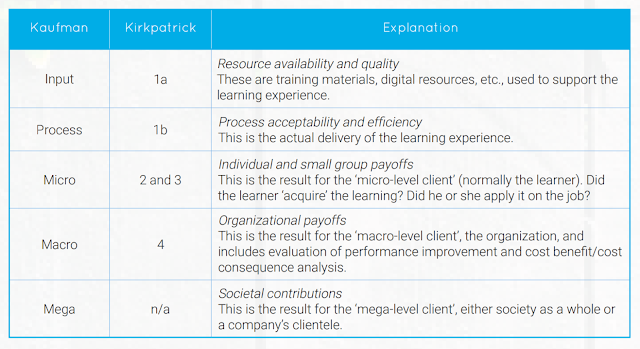What a great wrap up to not only this course, but to the educational technology program as a whole. While I realize not everyone who takes this course will have completed all other course work (with the exception of one class) as I have, I found this section of the text to be a nice culmination of the technology tools, affordances, pedagogical practices, and issues I have explored in the program thus far.
Specifically, distributed learning is directly applicable to my experiences in another course as we looked at the difference between distributed cognition and distributed learning along with the affordances that online learning systems have to offer. From both the text in this course and the one in my other course along with the discussions I have had with peers, I have discovered that distributed learning refers to experiences and environments where learning is constructed by a variety of sources including people and tools which can include technology. Distributed cognition, or the shared constructed knowledge, is described as the result of these learning experiences according to the students of Pepperdine University studying learning technology (Distributed Cognition, n.d).
The development of this concept truly changed how I look at the affordances of and purposes for online learning. Before beginning my online graduate studies in educational technology, online learning seemed like a distant practice that was most beneficial when students are unable to attend face-to-face courses. Below is a reflection on my experiences with distributed learning throughout my graduate program, but more recently as a result of the two classes I took this first summer session.
I used to think that online learning could not compete with the benefits of face-to-face learning experiences. Through my graduate studies and a better understanding of distributed cognition and learning from this course, I have a completely different outlook on the affordances that online learning has to offer. I have found that internet tools allow online learning to be just as collaborative as a face-to-face experience and in some cases can afford students a voice who would normally shy away from class discussions.
Now I think that a blended learning environment has many affordances that face-to-face learning experiences simply cannot offer including the ability to process information and formulate thoughts and arguments on one’s own time as well as the ability to continue the discussion outside the walls of the classroom. Issues are no longer confined to the physical walls of a classroom, but can now carry into students’ personal lives allowing them to make connections and respond virtually as relevant connections occur in their everyday lives. I also now think that integrating both opportunities for online discussion and debate as well as face-to-face collaboration when physically possible offers students the best of both worlds. In many ways, online collaboration tools have moved beyond replacing classroom discussion to enhancing or even redefining it as knowledge can be distributed in a wider context.
Application to Learning goals: I can apply this new paradigm of online learning by selecting tools that are safe and secure for my students while also providing them an online platform for discussion to continue the development of distributed cognition outside the classroom walls and keep the conversation going in between class sessions as I only see my student groups once per week.
Ethical Considerations: As briefly mentioned above, online learning opportunities for elementary students do come with certain considerations for safety and ethical use of information. In distributed learning environments, it is critical for the instructor to also be a part of the conversation by working to help guide the discussion and also holding students accountable to online etiquette practices while being sensitive to the issues that arise in such a diverse group of learners. To achieve this balance, as mentioned in the text, “instructional designers must familiarize themselves with the most effective ways to provide students with learning guidance” (Reiser and Dempsey, 2012).
Although the text claims that learning objects have come to be known more as digital objects used within a framework, I can think of multiple learning objects that have been used over the history of education. In a sense, a learning object defines the very idea of not “reinventing the wheel” each time you work as a designer of instruction. Educators have been utilizing and even piggy backing off the work of others for years, and as we made the shift to digitalization in education these learning objects have become more expansive and shared across a wider spectrum. Many of the digital tools we use for online learning represent examples of learning objects including tools such as Edmodo, PBworks, Google Sites and Classroom, and even smaller product development sites such as Wordle, Glogster, and Google Forms. The list is really endless and continues to grow at a rapid pace.
Application to Learning goals: Learning objects or reusable designs in a digital sense can be integrated into classroom activities in too many ways to even begin to explain. I think the way they support learning is by allowing the students, as opposed to the instructor, a way to design that they weren’t able to before or construct knowledge with more opportunities for creativity and personal expression of knowledge. The best way I can help my students to utilize reusable designs in their learning experiences is not by introducing them to a tool and helping them to get comfortable with it, but rather developing in them the ability to search for digital learning object designs that best suite each learning experience. I have found that the popularity of these digital learning objects come and go so quickly that it isn’t worth helping students feel confident in one tool. I need to push them to be risk takers who are comfortable with learning to use new or improved designs as a normal part of the learning process.
Ethical Considerations: Learning objects afford students to opportunity to be self-expressive in both synthesizing and presenting knowledge. With such a large amount of possibilities, it is the job of the instructional designer to help guide students towards learning objects that best suit the content they are working with. Also, although I did not touch on the benefits of learning objects to instructional designers, there are also important considerations designers must keep in mind when utilizing these tools as well. Designers must ensure that learning objects are student centered and align with best practices and learning theories believed to be most effective.
Web 2.0 has completely redefined the affordances of the first two technologies mentioned above. While distributed learning and learning objects existed well before the development of the internet, it was the introduction of Web 2.0 and networking technologies that really boosted the capabilities of previously used learning theories, methods and practices in education. As mentioned in the text, Web 2.0 affords “new opportunities for learners to take more control of their learning and access their own customized information, resources, tools and services” (Reiser and Dempsey, 2012). As students begin to take control of learning the sphere of influence they have on distributed cognition has grown exponentially as well.
Application to Learning goals: Web 2.0 supports “connectivist and constructivist learning pedagogies” in a way that traditional classroom methods were unable to do before. With the direction of learning in control of the learner, students are able to participate in a wide variety of experiences that accomplish the goal of collaborative, constructive learning and the sharing of knowledge and “achievements” with those all over the world.
Ethical Considerations: Utilizing Web 2.0 tools brings privacy concerns and a person’s digital presence to the forefront. It is important for those designing instruction for minors to keep the Child Internet Protection Act in mind while not hindering the development of online learning communities out of fear. Ethical practices must guide instructors to and instructional designers in the development and delivery of content helping students to also be aware of the impact of their digital footprint.
While ethical considerations need to be openly discussed and considered in the instructional designer community, instructional designers must be careful not to shy away from risks due to not understanding the impact such experiences could have on students. It is our responsibility as instructional designers to seek out the most current ethical beliefs in the field in order to harness the power of these technology tools for the benefit of learning and to provide a wider context of distributed cognition.
References:
Distributed Cognition C113. (n.d.). Retrieved June 28, 2017, from https://mindmaps.wikispaces.com/Distributed Cognition C113#TOP
Reiser, R. A., & Dempsey, J. V. (2012). Trends and issues in instructional design and technology. Boston: Pearson Education.



















